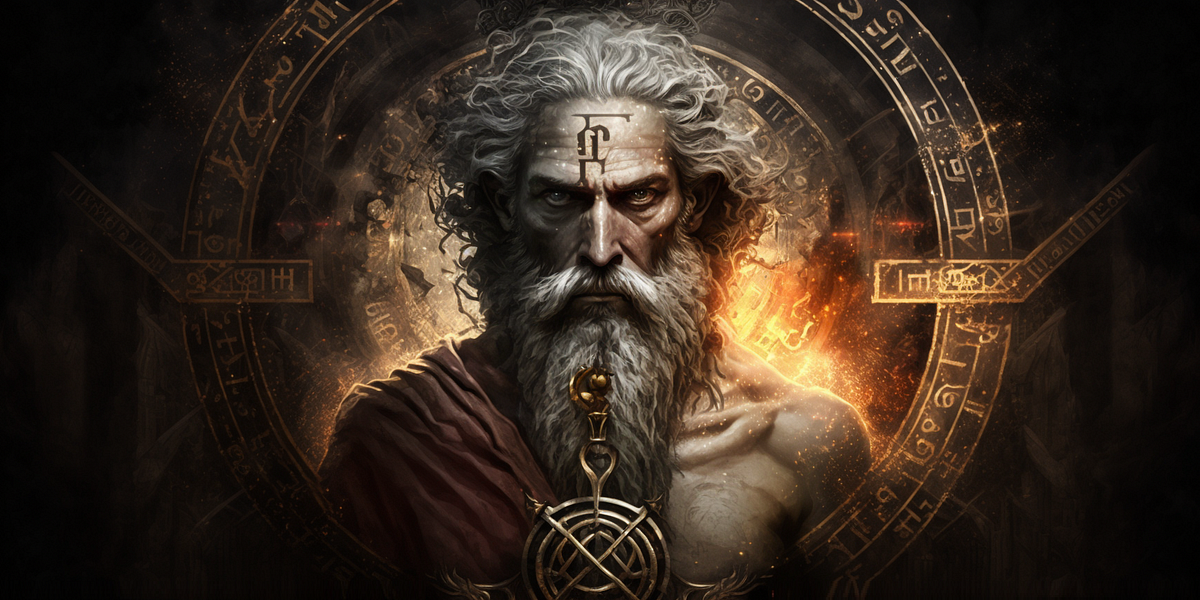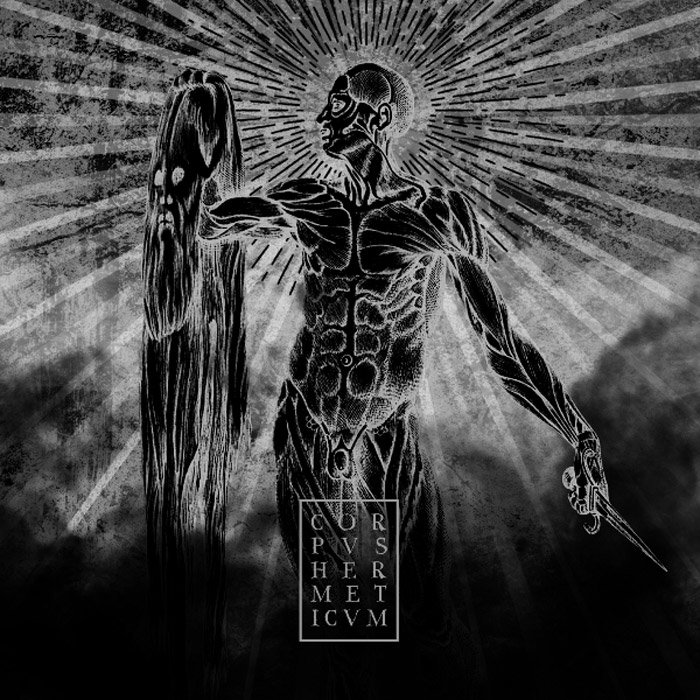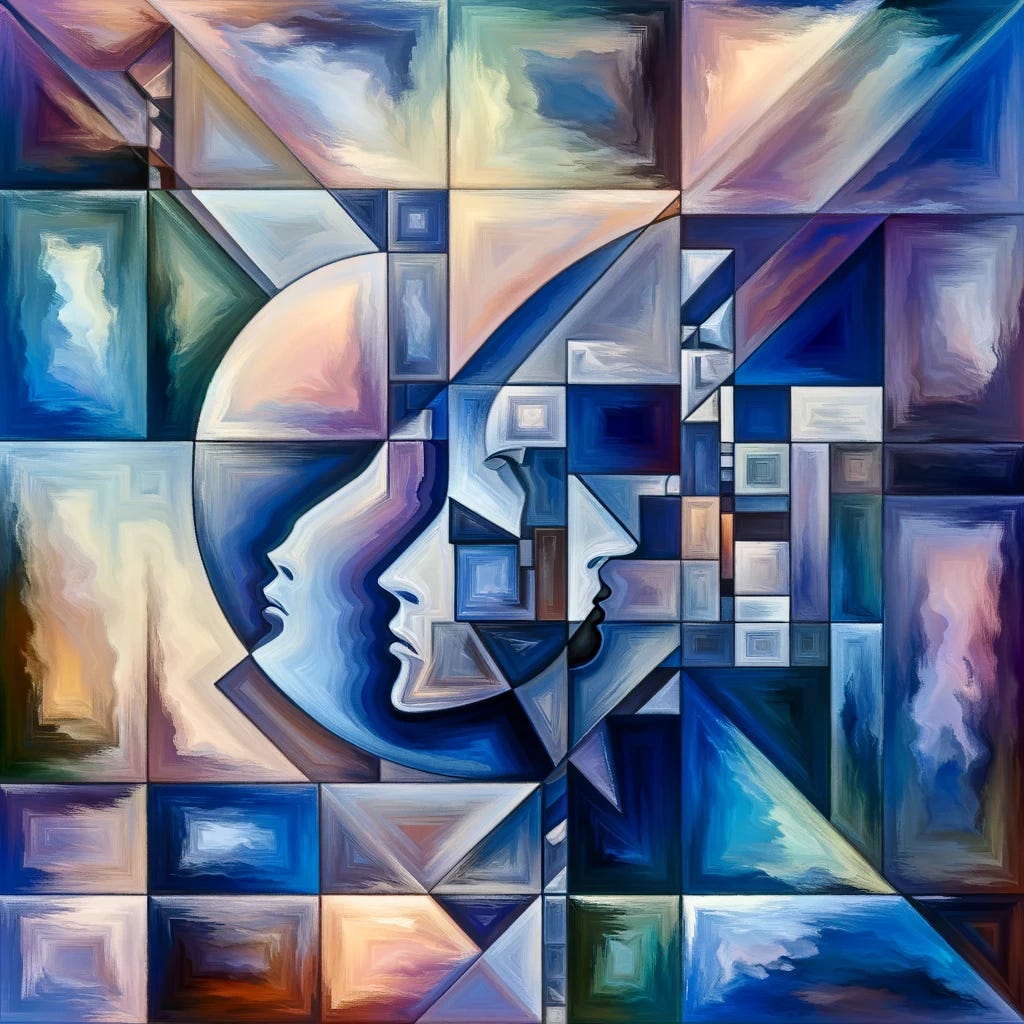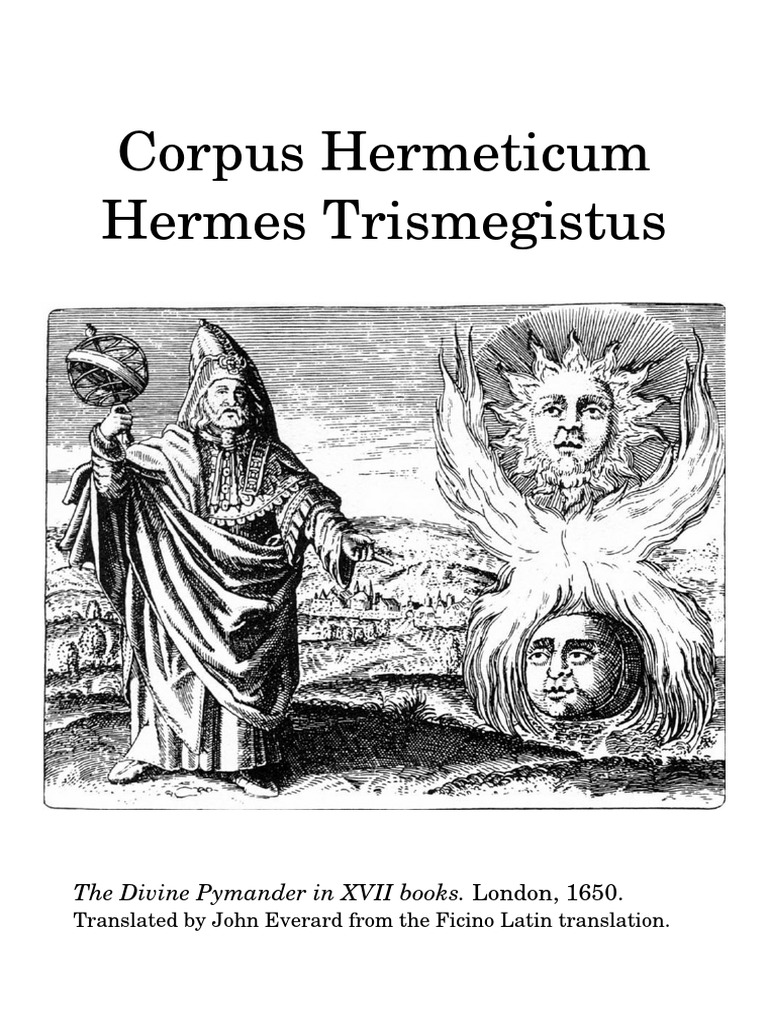What is written in the Corpus Hermeticum refers to a collection of ancient texts attributed to the legendary Hermes Trismegistus, blending Greek philosophy, Egyptian mysticism, and early Christian ideas. These writings, dating back to the 2nd or 3rd century AD, explore profound themes such as the nature of the universe, the divine essence of humanity, and the path to spiritual enlightenment. Often regarded as a cornerstone of Western esotericism, the Corpus Hermeticum has influenced thinkers across centuries, offering timeless insights into the interconnectedness of all things and the quest for gnosis.
The Origins of the Corpus Hermeticum

The Corpus Hermeticum emerges from a fascinating blend of cultural and intellectual traditions, marking a pivotal moment in the history of esoteric thought. This collection of texts, attributed to the mythical figure Hermes Trismegistus, represents a synthesis of Hellenistic philosophy and ancient Egyptian wisdom, reflecting a world where East and West converged in Alexandria during the early centuries of the Common Era. Understanding these origins not only illuminates what is written in the Corpus Hermeticum but also highlights its role as a bridge between pagan mysticism and emerging monotheistic religions. This foundational context sets the stage for exploring how these writings have endured as a source of spiritual inquiry.
Historical Context of the Texts
The historical backdrop of what is written in the Corpus Hermeticum is rooted in the cosmopolitan environment of late antiquity, particularly in Alexandria, Egypt, where diverse intellectual currents flowed freely.
During this period, Greek philosophy, Egyptian mystery cults, and Persian influences intermingled, creating a fertile ground for syncretic ideas. The texts likely emerged between the 1st and 3rd centuries AD, a time when the Roman Empire was grappling with cultural assimilation and religious pluralism.
This era saw the rise of Neoplatonism, with philosophers like Plotinus drawing from earlier Hermetic ideas, emphasizing the soul’s ascent to the divine. What is written in the Corpus Hermeticum reflects this intellectual ferment, presenting a cosmology that integrates the macrocosm and microcosm, where the universe is seen as a living, interconnected entity governed by divine principles.
Moreover, the decline of traditional pagan religions and the spread of Christianity added layers of complexity to these writings. Scholars debate whether the Corpus Hermeticum was a response to early Christian theology or an independent tradition that influenced it. For instance, the emphasis on direct revelation and personal gnosis in what is written in the Corpus Hermeticum parallels early Christian mysticism, suggesting a dialogue between traditions.
What is written in the Corpus Hermeticum also captures the socio-political turmoil of the time, including the Roman conquest of Egypt and the subsequent cultural exchanges. This context underscores the texts’ resilience, as they preserved ancient wisdom amid shifting powers, offering seekers a path to transcend earthly chaos through spiritual knowledge.
Authorship and Compilation Process
Attributing authorship to what is written in the Corpus Hermeticum involves unraveling the legend of Hermes Trismegistus, a figure conflated from the Greek god Hermes and the Egyptian god Thoth, symbolizing wisdom and communication.
Historically, this mythical author served as a pseudonym for anonymous writers who compiled these texts, possibly a group of philosopher-priests in Alexandria. The process of compilation was likely iterative, with texts being transcribed, edited, and expanded over generations, drawing from oral traditions and earlier manuscripts.
What is written in the Corpus Hermeticum, therefore, represents a collective effort rather than the work of a single individual, mirroring the collaborative nature of ancient scholarly circles. This anonymity allowed the texts to evolve, incorporating elements from Stoicism, Platonism, and Gnosticism, while maintaining a cohesive Hermetic worldview.
The compilation’s survival into the medieval period was no small feat, as these writings were often preserved in secret to avoid persecution. For example, during the Christianization of the Roman Empire, what is written in the Corpus Hermeticum was sometimes disguised or integrated into alchemical treatises, ensuring its transmission through the ages. This process highlights the adaptive genius of the texts, adapting to cultural shifts while preserving core esoteric truths.
In modern scholarship, figures like Marsilio Ficino played a key role in reviving interest, translating the texts in the 15th century and sparking a Renaissance of what is written in the Corpus Hermeticum. Thus, the authorship and compilation reflect a dynamic legacy, where ancient insights continue to inspire contemporary exploration.
Key Influences and Cultural Exchanges
The influences shaping what is written in the Corpus Hermeticum stem from a rich tapestry of cultural exchanges that spanned the Mediterranean world.
Egyptian elements, such as the worship of Thoth and concepts of magic and rebirth, form the bedrock, infusing the texts with a sense of divine magic and theurgy. Greek philosophy, particularly from Plato and Aristotle, contributed rational structures, like the idea of the Forms and the hierarchical cosmos, which are evident in the Hermetic dialogues.
What is written in the Corpus Hermeticum also draws from Persian and Chaldean traditions, incorporating astrological and alchemical motifs that emphasize the universe’s harmonic order. These exchanges were facilitated by trade routes and scholarly networks in Alexandria, where libraries like the Great Library served as hubs for knowledge synthesis.
Furthermore, the texts’ engagement with early Jewish and Christian ideas, such as the Logos concept, illustrates a broader intercultural dialogue. What is written in the Corpus Hermeticum, in this light, acts as a mirror to the syncretic spirit of its time, blending monotheistic tendencies with polytheistic mysticism.
This cultural amalgamation not only enriched the content but also ensured the texts’ adaptability, allowing them to influence diverse fields from alchemy to modern psychology. Overall, the origins of what is written in the Corpus Hermeticum reveal a profound interplay of ideas that continues to echo in today’s spiritual quests.
Core Teachings and Doctrines

At the heart of what is written in the Corpus Hermeticum lies a profound set of teachings that offer a roadmap for understanding the cosmos and humanity’s place within it. These doctrines emphasize the unity of all existence, the potential for divine knowledge, and the transformative power of inner enlightenment. Far from abstract philosophy, the texts provide practical insights into achieving spiritual ascent, drawing readers into a world where the material and spiritual realms are inextricably linked. This section delves deeper into the foundational ideas that make the Corpus Hermeticum a timeless guide for seekers of wisdom.
The Principle of Correspondence
One of the central tenets in what is written in the Corpus Hermeticum is the principle of correspondence, often summarized as “as above, so below,” which posits a mirroring relationship between the macrocosm and microcosm.
This idea suggests that the patterns observed in the universe reflect those within the individual soul, encouraging practitioners to study celestial phenomena as a means of self-understanding. For instance, the movements of planets are seen not just as astronomical events but as metaphors for internal psychological processes, fostering a holistic view of reality.
What is written in the Corpus Hermeticum elaborates on this through allegorical dialogues, where Hermes Trismegistus instructs disciples on aligning personal actions with cosmic laws. This alignment is crucial for achieving harmony, as it bridges the gap between the divine and human spheres.
In practice, this principle influences fields like astrology and alchemy, where understanding celestial correspondences aids in personal transformation. Ultimately, it empowers individuals to recognize their divine potential, transforming everyday experiences into opportunities for spiritual growth.
The Nature of God and the Universe
What is written in the Corpus Hermeticum portrays God as an ineffable, all-encompassing force, often described as the One or the Nous, from which the entire universe emanates.
This divine essence is both immanent and transcendent, permeating all creation while remaining beyond human comprehension. The texts depict the universe as a living organism, born from God’s thought, where matter and spirit coexist in a dynamic interplay.
For example, the Hermetic view challenges dualistic philosophies by asserting that evil arises from ignorance rather than an opposing force, emphasizing the inherent goodness of the cosmos. What is written in the Corpus Hermeticum thus promotes a monistic perspective, where understanding God’s nature leads to a deeper appreciation of universal unity.
This doctrine has profound implications for ethics and cosmology, urging readers to seek gnosis—direct knowledge of the divine—as a path to salvation. In essence, it reframes the universe as a sacred text waiting to be deciphered, inviting ongoing exploration.
Human Divinity and Spiritual Ascension
Central to what is written in the Corpus Hermeticum is the belief in human divinity, asserting that every individual possesses a spark of the divine that can be awakened through spiritual practices.
This concept underscores the potential for ascension, where one transcends material limitations to achieve union with the divine. The texts outline a process of purification and illumination, involving meditation, ethical living, and intellectual study.
What is written in the Corpus Hermeticum warns that without this inner work, humans remain trapped in cycles of ignorance and rebirth. Through allegorical narratives, it illustrates how achieving gnosis liberates the soul, granting eternal life in the divine realm.
This teaching not only inspires personal development but also influences modern self-help and psychological theories, emphasizing the transformative power of self-realization.
The Hermetic Philosophy in Practice

What is written in the Corpus Hermeticum extends beyond theoretical discourse to offer practical applications for everyday life, transforming abstract concepts into actionable wisdom. These teachings encourage the integration of spiritual principles into daily routines, fostering personal growth and harmonious living. By exploring rituals, ethical guidelines, and meditative practices, the texts provide a blueprint for embodying what is written in the Corpus Hermeticum, making ancient insights relevant in contemporary contexts.
Alchemy and Transmutation Processes
Alchemy in what is written in the Corpus Hermeticum symbolizes not just physical transmutation
Alchemy and Transmutation Processes

Alchemy in what is written in the Corpus Hermeticum symbolizes not just physical transmutation, such as the quest for turning lead into gold, but also a profound spiritual journey towards enlightenment and self-realization. It serves as a metaphor for personal transformation, where the base elements of one’s character are refined into higher virtues.
The Symbolism of Alchemical Stages
In the Hermetic tradition, alchemy consists of various stages that parallel spiritual development, each rich with symbolic meaning.
- Calcination: This initial stage involves breaking down the ego and false beliefs, akin to burning away impurities. Practitioners are encouraged to confront their limitations and the aspects of themselves that hinder growth. This process is necessary for developing self-awareness and humility—qualities essential for deeper spiritual understanding.
- Dissolution: Following calcination, dissolution reflects the need to let go of rigid structures and open oneself to new experiences. In life, this might manifest as embracing uncertainty or surrendering to the flow of existence. It teaches that true transformation requires the courage to dissolve old paradigms and allows for greater fluidity in thought and action.
- Separation: This stage emphasizes discernment, allowing individuals to distinguish between what is sacred and what is mundane within themselves. By cultivating an understanding of one’s internal landscape, practitioners learn to identify qualities that align with their highest self, fostering a more authentic existence.
- Conjunction: The culmination of these processes leads to conjunction, where opposites unite. Here lies the realization of the inner divine nature, as the soul recognizes its relationship with the cosmos. This stage illustrates the concept of holistic integration, promoting a harmonious balance between the material and spiritual dimensions of life.
Thus, the symbolic journey through the alchemical stages described in what is written in the Corpus Hermeticum becomes a narrative of growth and enlightenment. It highlights how our personal transformations resonate with universal principles, ultimately guiding us toward wholeness.
Spiritual Practices and Meditative Techniques
The practical implementation of Hermetic teachings involves various spiritual practices and meditative techniques designed to facilitate personal transformation and connection with the divine.
- Meditation: Central to Hermetic practice is meditation, which fosters deep introspection and alignment with cosmic rhythms. Engaging in focused contemplation allows the practitioner to cultivate inner silence, creating space for insights to emerge. This reflective practice helps deepen one’s understanding of the interconnectedness of the universe, echoing the principle of correspondence discussed previously.
- Rituals: Rituals serve as a means of channeling intentions into tangible actions that align with spiritual aspirations. These can range from simple daily affirmations to elaborate ceremonial rites intended to invoke divine energies. Engaging in rituals reinforces commitment to personal growth, acting as a reminder of the sacred journey undertaken.
- Ethical Living: The Hermetic philosophy encourages ethical living as a foundation for spiritual ascension. What is written in the Corpus Hermeticum upholds values such as truth, compassion, and justice, urging practitioners to embody these virtues in their interactions with others. Ethical conduct strengthens the bonds between individuals, facilitating a collective elevation towards higher consciousness.
By integrating these practices into daily routines, followers of Hermeticism can embody its teachings, transforming everyday life into a sanctified path toward enlightenment.
The Role of Intellect and Knowledge
In what is written in the Corpus Hermeticum, knowledge is revered as a vital component of spiritual awakening. The texts emphasize that intellectual pursuits should not merely be mechanical exercises but rather a means of connecting with the divine wisdom embedded in the universe.
- Philosophical Inquiry: Engaging in philosophical inquiry nurtures curiosity about existence and the nature of reality. The Hermetic approach invites seekers to ask profound questions, stimulating critical thinking and fostering a deeper appreciation for the mysteries of life. This intellectual probing leads to greater self-awareness and insight into the divine order that permeates all creation.
- Study of Sacred Texts: The Corpus Hermeticum itself encourages the study of sacred texts as a pathway to enlightenment. By immersing oneself in these writings, practitioners gain access to timeless insights and teachings that resonate with their spiritual quests. Through interpretation and reflection, they uncover layers of meaning that guide them on their transformative journeys.
- Integration of Knowledge and Experience: The ultimate goal is the integration of theoretical knowledge with lived experience. Just as alchemy seeks to transform base metals into gold, so too does the pursuit of wisdom aim to transmute intellectual understanding into spiritual realization. This synthesis empowers individuals to navigate the complexities of existence while remaining tethered to their divine essence.
In summary, the role of intellect and knowledge in what is written in the Corpus Hermeticum underscores the importance of comprehensive understanding as a catalyst for spiritual evolution.
Conclusion

The teachings encapsulated in what is written in the Corpus Hermeticum offer a multifaceted exploration of existence, intertwining philosophy, spirituality, and practical applications. Through core doctrines, the text unveils a template for understanding the universe and humanity’s place within it, emphasizing unity, divine potential, and the transformative power of inner enlightenment.
As seekers engage with the principles of correspondence, the nature of God, human divinity, and the alchemical processes, they embark upon a journey of profound personal transformation. The Hermetic philosophy transcends mere intellectual discourse, inviting individuals to integrate ancient wisdom into their daily lives through meditation, ethical living, and active inquiry.
Ultimately, what is written in the Corpus Hermeticum remains a timeless guide, resonating with those who seek to illuminate their paths and understand their roles within the grand tapestry of existence. Its teachings continue to inspire modern spiritual seekers, reminding us that the quest for knowledge and truth is an eternal journey—one that bridges the ancient and the contemporary, the material and the divine.

GIPHY App Key not set. Please check settings